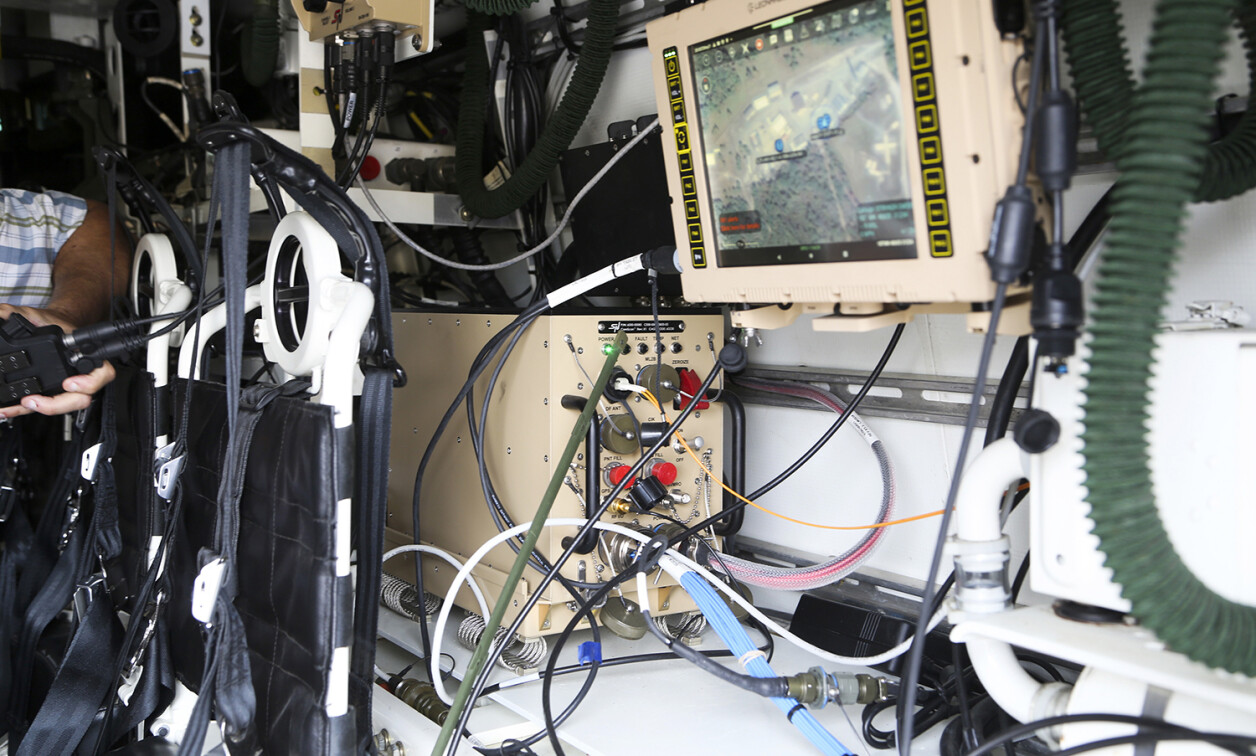DoD’s MOSA mandate drives CMOSS approach to A-PNT
StoryDecember 01, 2022

The U.S. Army’s Mounted Assured PNT System (MAPS) program was initiated to replace existing GPS receivers and antennas in most of the Army’s ground vehicle variants, eliminating redundancy. The program is overseen by PM-PNT at the Army’s Aberdeen Proving Ground in Maryland, where mounted and dismounted position, navigation, and timing (PNT) technologies for the Army are developed and managed.
The first iteration of Mounted Assured PNT System (MAPS) systems, known as “MAPS GEN I,” are able to distribute PNT data directly to multiple systems on a vehicle, replacing the need for multiple GPS devices – a common situation – on a single platform. The first U.S. MAPS GEN I system was first operationally deployed by the U.S. Army in 2019.
The follow-on generation of the program, MAPS GEN II, adds additional capabilities to enable an Assured PNT (A-PNT) solution that uses multiple sensors and multiple sources to provide PNT information in environments where access to trusted GPS data is diminished or denied.
Today, most PNT solutions are stovepiped or isolated systems. For the next generation of MAPS technology, the U.S. Army – in an attempt to seek a better way to operate – has directed industry that it wants to move from the closed-system approach employed in MAPS GEN I and MAPS GEN II and move instead to an open architecture CMOSS [C5ISR/EW Modular Open Suite of Standards]-based design to bring the program in line with the U.S. Department of Defense (DoD) mandate for modular open system approach (MOSA)-based solutions. In addition to combating vendor lock, a CMOSS-based MAPS solution using industry-standard OpenVPX form factor cards, will improve the Army’s ability to respond quickly to emerging threats, no matter what they might be.
The move towards modular open architectures for next-gen MAPS isn’t limited to hardware: Another differentiator for the follow-on to MAPS GEN II is the emergence of the PNT Operating System (pntOS) operating environment, which brings the MOSA mandate to PNT software development. pntOS is described by the Army as “an open source, government-owned plugin architecture for building integrated PNT sensor fusion applications for all operational environments.” It uses standard message formats to ensure that all plugins written using the software will be swappable without modification. This government-owned open architecture was developed to integrate seamlessly with other open architectures.
Using pntOS, software developers can write plugins based on their own field of expertise for navigation-filter algorithms, sensor-integration strategies, integrity approaches, and network buses in isolation, without needing to understand any other part of pntOS.
This open-source approach to software for PNT applications enables developers to write custom pntOS plugins in any programming language, which means improvements in cost, program schedules, and performance efficiencies. As an open-source, government-owned plug-in architecture for building integrated PNT sensor-fusion applications, pntOS substantially reduces the time and effort required to develop algorithms and add support for new sensors.
In addition, the Army is directing industry that the next-generation MAPS will need to support Alternative RF Navigation, a space-based commercial system that is currently being evaluated as an alternative and complementary source of PNT information on the battlefield. (Figure 1.)

[Figure 1 | A space-based commercial navigation system is under evaluation as a complementary source of position, navigation, and timing (PNT) for battlefield users. Stock image.]
The Army’s wish list for next-gen MAPS therefore combines CMOSS architecture and support for pntOS and Alternative RF Navigation. During recent AUSA conference in October 2022, the first rugged CMOSS module that delivers an Assured Position Navigation and Timing (A-PNT) solution was introduced and demoed that includes support for both Alternative RF Navigation and pntOS. The VPX3-673A module is a rugged 3U OpenVPX form factor module compatible with the U.S. Army’s CMOSS suite of standards and aligned to the Sensor Open Systems Architecture (SOSA) Technical Standard 1.0.
The rugged CMOSS/SOSA aligned A-PNT card ingests positioning and timing data from multiple sensors and output consistent and trusted timing and navigation information to the warfighter. It combines a low-noise chip scale atomic clock (LN-CSAC), a Xilinx MPSoC [multiprocessor system on a chip] processor, an Alternative RF Navigation receiver, and an inertial measurement unit (IMU) on a single card. In addition, the board hosts an internal GPS module capable of both SASSM decryption and M-Code, or an external GPS receiver accessed via a front-panel connector. The board distributes A-PNT information using standard VICTORY data messages in compliance with the CMOSS Mounted Form Factor (CMFF) architecture.
The card can act as systemwide timing master by producing and distributing phase-aligned clock signals. The source is user-selectable from multiple options, including the LN-CSAC, GPS, Alternative RF Navigation, or external sources via the Ethernet backplane or coax connectors. Additionally, this module supports NTP/PTP protocol. In compliance with the SOSA radial clock profile, the module is capable of outputting 11 radial clocks on the backplane and one radial clock on the coax connector. If more clock channels are required, multiple modules can be daisy-chained together.

Jason DeChiaro is a system architect at Curtiss-Wright whose responsibilities include supporting customers in architecting deployable VPX systems including CMOSS/SOSA compliant designs. Jason has more than 15 years of experience in the defense industry supporting the U.S. Air Force, U.S. Army, and U.S. Navy and the IC community. He received his electrical engineering degree, with distinction, from Worcester Polytechnic Institute in Massachusetts.
Curtiss-Wright Defense Solutions https://www.curtisswrightds.com/








